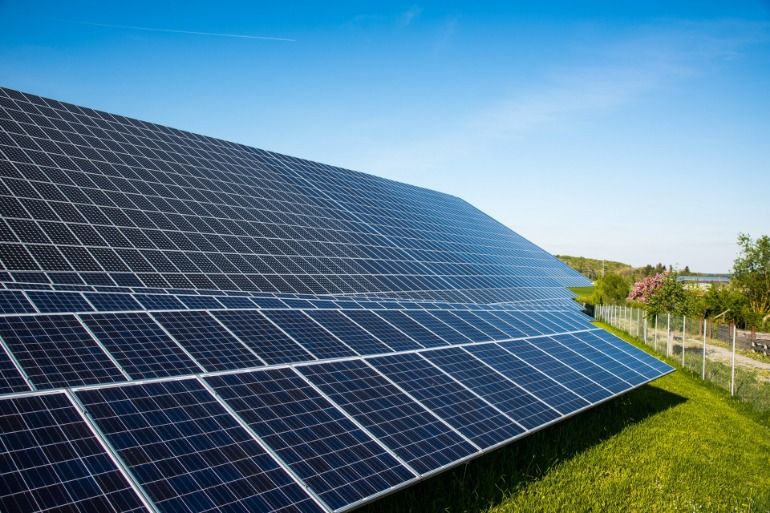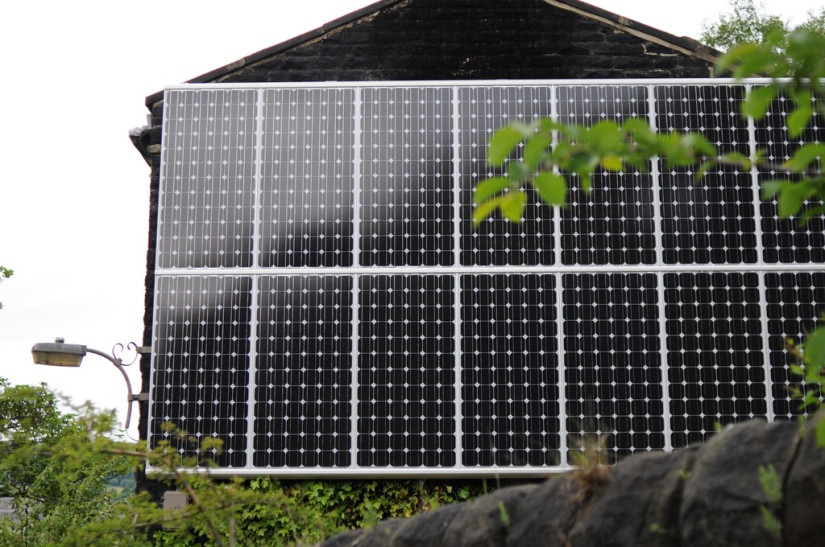
Over 41% of the global land area is occupied by Dry-land (arid and semi-arid) and is home to more than 2.5 Billion people. It contributes to around 40% of the overall grain production and support two-thirds of livestock population. Despite that, dry-land agriculture production deals with many crucial challenges including an inadequate irrigation system, prolonged dry spells, low soil fertility, etc. jeopardizing its resilience and sustainability. However, according to a recent study conducted by Oregon State University scientists, solar arrays could be a resource that can increase agricultural productivity on dry farmlands.
Solar PV Arrays – A Sustainable Solution
A study published in the PLOS One journal revealed that the research group OSU’s College of Agricultural Science discovered, grasses which are favored by cattle and sheep flourish in the shade of solar array installed in a pasture on the campus of OSU. The results of this study further indicated that location solar panels on field or agricultural land could boost the productivity of the crop.
According to corresponding author Chad Higgins, some plants have the capability of thriving in shaded environments. And the amount of water required to grow these plants in shaded areas was tremendously less than what it is required in the open field. Moreover, with less water and optimum solar energy, the yield obtained was double.
Higgins further highlighted that the concept of solar PV projects on agricultural land is not new. The difference is, the earlier solar array was not installed dedicatedly to increase plant productivity; it was merely an accident. However, presently scientists have begun to develop a better understanding of how they can engineer a dedicated system that can be technically practical, economically sustainable, and environmentally sound.
Increased Soil Moisture and Nutritional Value
Oregon State University’s solar PV project located in Corvallis is spawned across 10 acres’ land and has the ability to produce 2.6 Million KWh of sustainable energy per year. Walking past the solar array, Higgins and his colleagues noticed green grass growing under the shades of the installed panels. So they installed microclimate research stations that measured mean air temperature, wind speed, relative humidity, soil moisture, wind direction, etc. After three months, the records revealed that regions under the solar panels maintained higher soil moisture than the open lands. Further, the analysis also found that the shaded areas produced double the amount of plant material and nutritional value than the openly- produced plants. There was also a considerable increase in late season plant growth.
Comprehensive Growth Opportunity
Growing plants in solar farms offered various benefits to move towards the primary objective of expanding renewable energy and reducing carbon emission. An energy-water-land lead analyst at National Renewable Energy Laboratory (NREL) said that solar development is being executed at a massive scale on unused and lands. Growing plants in solar farms present a prolific opportunity to optimize agriculture, strengthen food security while generating sustainable energy at the same time.
Protecting the Declining Pollinators
Crop and native vegetation can help in improving the pollinators health that is already endangered by habitat loss, poor nutrition, pesticide poisoning, decreased genetic diversity, etc. With more and more land being utilized for solar energy production, the concept of making region pollinator-friendly makes economic and environmental sense. Val Dolcini, the President and CEO of Pollinator Partnership based on San Francisco asserted that including habitat into solar farms around the globe is an effective way to protect and promote pollinator health.
Under–panel Native plants advantages don’t limit to solar farm surrounding but also extend to other cropland in the vicinity. Lee Walston a renowned ecologist at Argonne National Laboratory said that pollination insects go beyond solar installations to other croplands, where they boost the production. The native plant offers shelter to dwindling species while serving the purpose of controlling storm water and erosion.
The growth of Various Solar Panel Planting Projects

There have been various pilot projects in Germany, Arizona, Massachusetts, Japan, Croatia, Italy, France, and Japan that encourages dual use of farms because they render both agricultural and electrical production. A dual-use of farm operated by the University of Massachusetts grew different plants including peppers, beans, tomatoes, Swiss chard, etc. under the solar panels elevated around 7.5 to 9 feet above the ground to enable easy harvesting. Moreover, project researchers have revealed that around 3 to the 4-foot gap between panel clusters result in crop yield to be almost the same as it would have been in full sun site. The experiment also revealed that the skin temperature of the farmers harvesting the crops underneath the panel was 25-degrees cooler than those who are working under the bright sun.
Socially, Economically, Environmentally Beneficial Notion
Using solar panels for agricultural purposes is certainly a concept that holds substantial potentials. While the phenomenon is still at its inception, if executed efficiently it can prove to be highly profitable to individuals and the environment in more than one way.